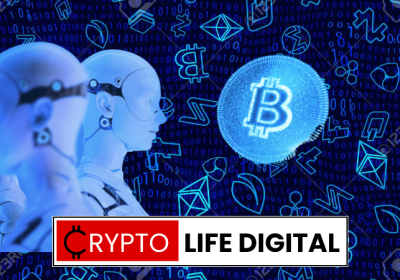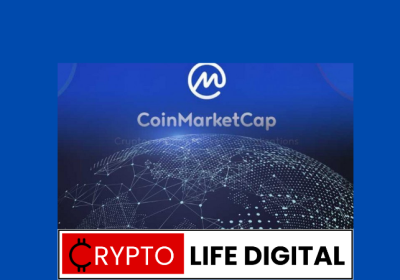Will cryptocurrency settle Inflation?

It’s natural to think that cryptocurrency guards against rising inflation. The major cryptocurrencies have either fixed their number of coins or, at the least, have capped their potential circulation growth. Central banks operate otherwise. They create as much money as they wish. Consequently, as with gold, which also has a relatively fixed supply, cryptocurrency is widely regarded as inflation.
Many praise crypto’s inflation-fighting powers. The trader Paul Tudor Jones claims that crypto protects better against inflation than does gold. JP Morgan agrees, as doesForbes. Cryptocurrency skeptics often criticize the asset for being volatile, unregulated, and/or dangerously speculative, but with rare exceptions, they have not questioned its ability to protect against increasing inflation.
What Pattern?
Such complacence is understandable. Cryptocurrency has existed for only 12 years, during which inflation has been dormant. Nevertheless, fears about inflation’s return have periodically surfaced. Such worries cost the Dow Jones Industrial Average 1,032 points on Feb. 8, 2018. Shifting central-bank policies have also given cryptocurrency something against which to react.
From what I can tell, the inflation news hasn’t affected cryptocurrency prices. The following chart separates bitcoin performance over the past half-decade into five stages, as determined by 1) bitcoin’s returns, 2) the level of inflation, and 3) the direction of U.S. short-term interest rates. (During that period, bitcoin regularly accounted for more than 40% of all cryptocurrency assets.) If there is a pattern among the tea leaves, I have yet to discern it.
Let’s review what occurred in each stage:
Stage 1 — Strong bitcoin, low inflation, rising rates
Bitcoin rocketed in Stage #1, which ran from November 2016 through January 2018. For the calendar year 2017, bitcoin gained 1,318%. Even Elon Musk would have been impressed. Although inflation remained modest, with the Consumer Price Index advancing 2.1%, that figure was the highest since 2012. Consequently, the Federal Reserve raised interest rates thrice, in an attempt to slow inflation.
Stage 1 was a promising environment for cryptocurrency to flex its inflation-protecting powers. Crypto delivered on its potential, fully and completely.

Stage 2 — Weak bitcoin, low inflation, rising rates
What a difference a year makes! In 2018, the macroeconomic backdrop persisted. Inflation continued to rise, reaching a 2.4% annual rate, and the Federal Reserve again boosted interest rates, by a full percentage point. Yet bitcoin headed in the opposite direction, shedding almost three-fourths of its value for the year.
Read Also: Facebook Says, It won’t Launch Crypto In India Due To Regulatory Issues
It’s difficult to understand why this time was different. To defend the inflation-fighting thesis, one could argue that the 2018 marketplace correctly anticipated that the Federal Reserve’s actions would throttle the threat of inflation, thereby reducing cryptocurrency’s attractiveness. It’s unclear, though, why 2017’s investors would have been so powerfully convinced of the opposite view.
Stage 3 — Good bitcoin, low inflation, declining rates
With inflation fears fading, the Federal Reserve stopped raising interest rates during the first half of 2019. In the year’s second half, it began to lower them, gradually at first, and then in one fell swoop when COVID-19 arrived in March 2020. By month’s end, interest rates were zero. (Technically, 5 basis points, but $50 worth of annual interest for every $100,000 received is as close to zero as any borrower can reasonably hope.) Inflation subsided as well.
Stage 4 — Strong bitcoin, low inflation, flat rates
The fourth stage ran from May 2020 through April 2021. Global economies struggled throughout the period. Due to COVID-19 shutdowns, production declined, accompanied by steep unemployment. Across the developed world, interest rates were virtually nil, and inflation was very low, although it did increase near the end of the period. Bitcoin boomed. During those 11 months, it gained more than 600%.
This time, the investor-expectations argument openly flops. In November 2020, a survey of economic forecasters predicted a 2.1% U.S. inflation rate in 2021, followed by a slightly lower rate for the rest of the decade. In no way, shape, or form did the November 2020 marketplace anticipate this year’s inflationary spike. Yet by that date, bitcoin had already quadrupled from its March low.
Stage 5 — Flat bitcoin, rising inflation, flat rates
The most-recent stage needs little discussion. Inflation has been sharply higher, leading to much public handwringing. Yet global central banks, including the Federal Reserve, have not raised interest rates. By and large, government economists downplay the possibility of renewed inflation, arguing instead that rates should remain unusually low, to support economic expansion.
This would seem to be the ideal investment climate for cryptocurrency, even more than Stage 1. Inflation is currently flourishing, without countermeasures from central bankers. Yet bitcoin has dog paddled. As I write this draft, one bitcoin costs $59,403, which places the currency $4,000 below its April 15 closing price. (The second-largest cryptocurrency, Ethereum, is slightly above its spring peak.) Since inflation began in earnest, the S&P 500 has outperformed cryptocurrency.
In conclusion, it would be rash to contend that cryptocurrency does not protect against rising inflation. The assertion that it hedges against inflation rests on the scanty hypothesis. There has been little opportunity to test that claim, and when the chances have presented themselves, cryptocurrency’s performance hasn’t consistently backed the thesis. But neither has crypto been given the chance to fail.
In this view, while it is reasonable to suppose that cryptocurrency will help a portfolio survive inflations ravages, that plan is far from ascertained, Buying Treasury Inflation-Protected Securities is a much safer approach, albeit potentially less lucrative.

Cryptolifedigital is a cryptocurrency blogger and analyst known for providing insightful analysis and commentary on the ever-changing digital currency landscape. With a keen eye for market trends and a deep understanding of blockchain technology, Cryptolifedigital helps readers navigate the complexities of the crypto world, making informed investment decisions. Whether you’re a seasoned investor or just starting out, Cryptolifedigital’s analysis offers valuable insights into the world of cryptocurrency.










